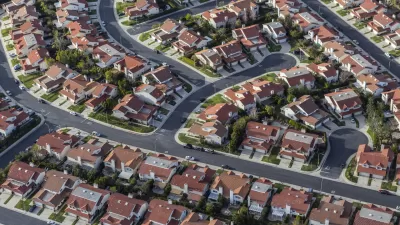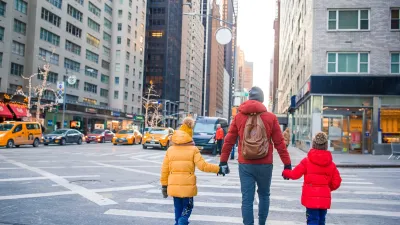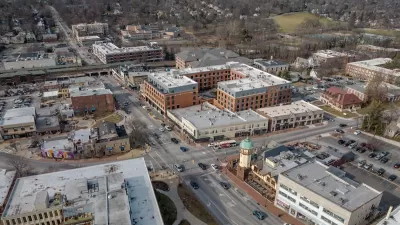With their anti-urban inward orientation, cul-de-sacs are representative of the auto-oriented, privatized suburban development model. But one sociologist is out to demonstrate their benefits by showing how cul-de-sacs can develop social cohesion.
Books like Bowling Alone have traced the decline in community engagement in postwar America, and connected such trends to the growth of suburban lifestyles. But, as Emily Badger explains, findings published by sociologist Thomas R. Hochschild Jr. in the Journal of Urban Planning and Development may upend our ideas about how suburban environments contribute to social cohesion.
"In sociologist's terms, Hochschild ultimately concluded that people who live in traditional bulb cul-de-sacs have the highest levels of attitudinal and behavioral cohesion (covering both how they feel about their neighbors and how much they actually interact with them)," she notes. "People who live on your average residential through-street have the lowest levels (in between the two are 'dead-end' cul-de-sacs that lack that traditional, circular social space)."
"To Hochschild's thinking, all of this means that we may want to weigh the social benefits of the cul-de-sac against the engineering critiques of how they fit into the larger street grid," adds Badger. "Or, better yet, he envisions designing cul-de-sacs that more directly connect to main, walkable routes to school or the grocery store, in an effort to address both schools of thought."
FULL STORY: The Case for Cul-de-Sacs

Trump Administration Could Effectively End Housing Voucher Program
Federal officials are eyeing major cuts to the Section 8 program that helps millions of low-income households pay rent.

Planetizen Federal Action Tracker
A weekly monitor of how Trump’s orders and actions are impacting planners and planning in America.

Ken Jennings Launches Transit Web Series
The Jeopardy champ wants you to ride public transit.

Crime Continues to Drop on Philly, San Francisco Transit Systems
SEPTA and BART both saw significant declines in violent crime in the first quarter of 2025.

How South LA Green Spaces Power Community Health and Hope
Green spaces like South L.A. Wetlands Park are helping South Los Angeles residents promote healthy lifestyles, build community, and advocate for improvements that reflect local needs in historically underserved neighborhoods.

Sacramento Plans ‘Quick-Build’ Road Safety Projects
The city wants to accelerate small-scale safety improvements that use low-cost equipment to make an impact at dangerous intersections.
Urban Design for Planners 1: Software Tools
This six-course series explores essential urban design concepts using open source software and equips planners with the tools they need to participate fully in the urban design process.
Planning for Universal Design
Learn the tools for implementing Universal Design in planning regulations.
Heyer Gruel & Associates PA
Ada County Highway District
Institute for Housing and Urban Development Studies (IHS)
City of Grandview
Harvard GSD Executive Education
Toledo-Lucas County Plan Commissions
Salt Lake City
NYU Wagner Graduate School of Public Service





























